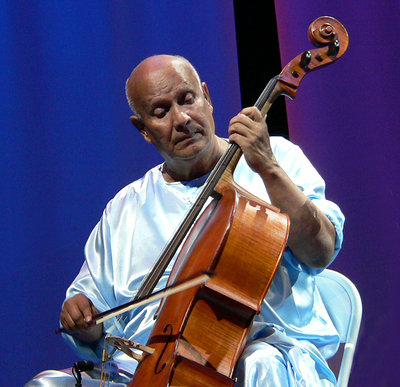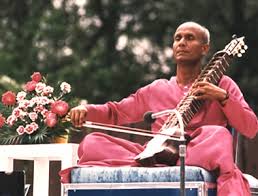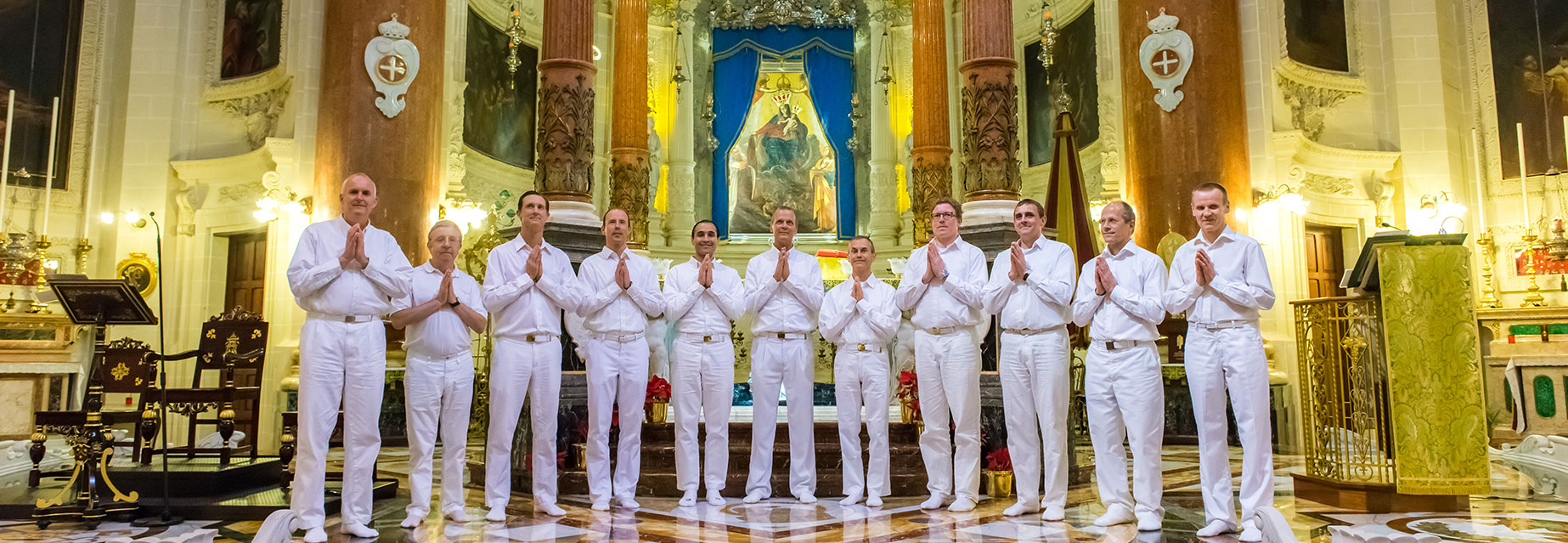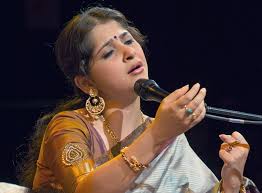 Recently I have been listening to the Indian singer Kaushiki Chakrabarty performing her beautiful and haunting devotional bhajans while accompanied by tabla, sarangi, harmonium and sarod. The songs were a recording from a live concert in the Netherlands, but across the span of time and space nothing of the power of her soulful singing is lost, her voice still melting one’s heart. Watching Kuashiki singing conveys a clear sense that she is gathering and capturing some beauty that comes from another, higher plane, the artist a vessel through which this beauty can find an outlet and manifest itself in this world.
Recently I have been listening to the Indian singer Kaushiki Chakrabarty performing her beautiful and haunting devotional bhajans while accompanied by tabla, sarangi, harmonium and sarod. The songs were a recording from a live concert in the Netherlands, but across the span of time and space nothing of the power of her soulful singing is lost, her voice still melting one’s heart. Watching Kuashiki singing conveys a clear sense that she is gathering and capturing some beauty that comes from another, higher plane, the artist a vessel through which this beauty can find an outlet and manifest itself in this world.
I am reminded of that other celebrated Indian composer/musician Sri Chinmoy, who often spoke of an infinite, unmanifested inner world where all the music and art and undiscovered things have their source, a world of ideas and infinite possibilities yet to see the light of day.
Sri Chinmoy spoke of inner stillness and meditation as a way through which the finite connects with the infinite and how the artist can receive inspiration from this rich inner world of endless possibilities. He comments: “Silence is the nest and music is the bird. The bird leaves the nest early in the morning and returns to the nest in the evening. Similarly, in the spiritual world, divine music comes from the inmost soul of silence.”
Artists sometimes access that lovely realm when we go beyond technique and mind and become one with our chosen art itself, as though we ourselves are an instrument and some beauty that is not our own is flowing through us. Athletes call it ‘being in the zone’ – a rapture of pure consciousness when the mind is free of all thought, constraint, self-consciousness and everything we do flows from some deeper part of our being. While performing, the ego ‘I’ that separates musician from music has gone and we have become the music itself.
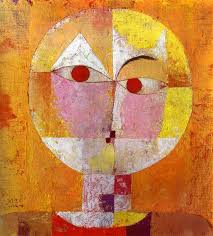 It was in this spirit that the artist Paul Klee compared the artist-performer to a tree and wrote,
It was in this spirit that the artist Paul Klee compared the artist-performer to a tree and wrote,
“From the root, the sap rises up into the artist, flows through him, flows to his eye. Overwhelmed and activated by the force of the current, he conveys his vision into his work. And yet, standing at his appointed place as the trunk of the tree, he does nothing other than gather and pass on what rises from the depths. He neither serves nor commands – he transmits. His position is humble. And the beauty at the crown is not his own; it has merely passed through him.”
My own interest in this principle was greatly heightened when in the mid 1980’s I attended a free concert offered by Sri Chinmoy in the Cathedral of St. John the Divine in New York city. Seated in this great vault of a cathedral, I could clearly feel that people around me were meditating – there was a stillness and a peacefulness that came from some inner dimension. On stage Sri Chinmoy stood before us, hands folded over his heart as though in prayer or invoking some higher force. Then he sat and began playing on a succession of different instruments, including an unusual triple-barreled wooden flute presented to him by the New Zealand flute maker Leo Cappell.
As my mind quietened and my heart opened a little, I began to feel something responding inside me, as though I was glimpsing through a small, clear window another, peaceful inner world. His melodies were simple and unconcerned with technical virtuosity, yet somehow they evoked the fragrance of a meditative inner reality, the musical downpour nourishing the wide-open spaces of the human soul itself. What a wonderful concert that was. I was remembering Franz Kafka’s remark about art, that it ‘must be the axe for the frozen sea within us’ – the concert had been like that, a thawing and an opening of the senses to something mystical.
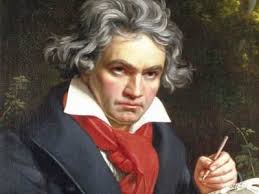 “Music is a higher revelation than all wisdom and philosophy” said Ludwig van Beethoven. “Music is the wine which inspires one to new generative processes, and I am Bacchus who presses out this glorious wine for mankind and makes them spiritually drunken.”
“Music is a higher revelation than all wisdom and philosophy” said Ludwig van Beethoven. “Music is the wine which inspires one to new generative processes, and I am Bacchus who presses out this glorious wine for mankind and makes them spiritually drunken.”
Sri Chinmoy saw music as a great unifier, a great force for world peace, a universal language uniting us together as one world family. He comments: “Music transcends the barriers of nations, nationalities and religions. It is through music that the universal feeling of oneness can be achieved in the twinkling of an eye. When we listen to soulful music, or when we ourselves play soulful music, immediately our inner existence climbs up high, higher, highest. It climbs up and enters into something beyond. This Beyond is constantly trying to help us, guide us, mould us and shape us into our true transcendental image, our true divinity. …A river is flowing through us, a river of consciousness, and this consciousness is all the time illumined.”
 “Chosen are those artists,” wrote Klee, “who penetrate to the region of that secret place where primeval power nurtures all evolution. There, where the powerhouse of all time and space – call it brain or heart of creation – activates every function, who is the artist who would not dwell there?”
“Chosen are those artists,” wrote Klee, “who penetrate to the region of that secret place where primeval power nurtures all evolution. There, where the powerhouse of all time and space – call it brain or heart of creation – activates every function, who is the artist who would not dwell there?”
Compositions by Sri Chinmoy can be heard here: https://www.radiosrichinmoy.org/
